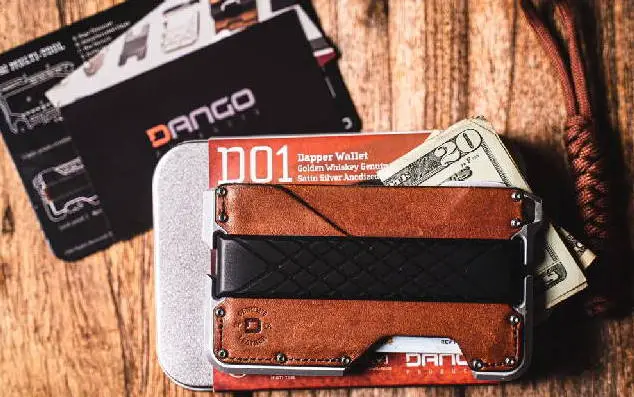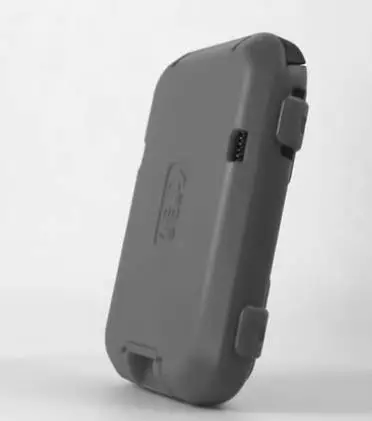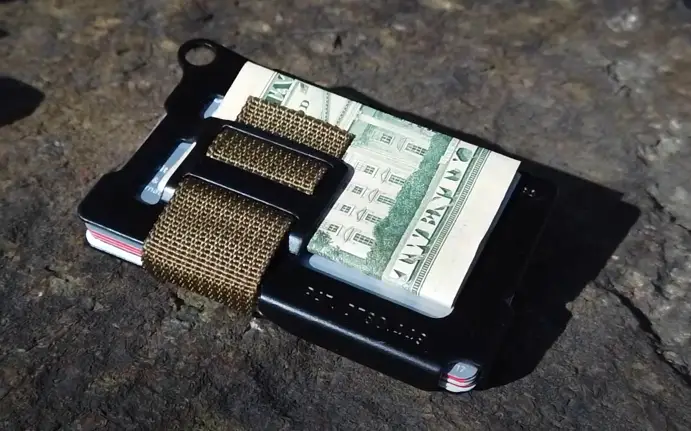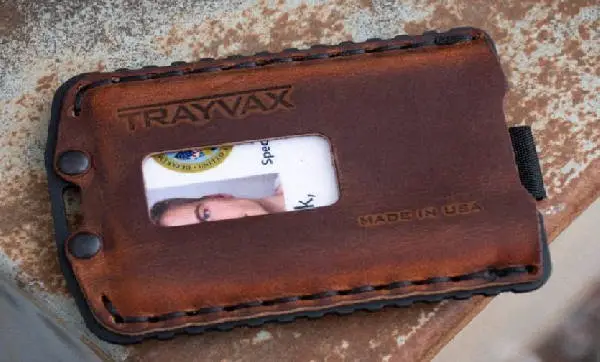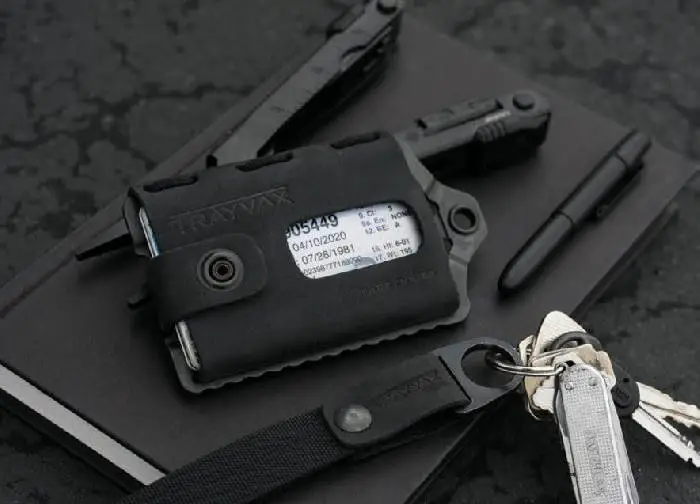There are a lot of factors that need to be considered to determine the optimal amount of cash for your wallet. For example, you have to consider the daily expenses, the type of lifestyle you live, as well as the type of wallet you use.
Even so, on average there are a couple of good suggestions that can help you determine how much money you should carry in your wallet and how best to organize it.
How Much Cash Should I Have In My Wallet?
The number of cash bills you should have in your wallet should be at least enough to cover all of your daily expenses. This includes food, utilities, transportation, and entertainment. The average amount of cash spent by the average American daily is $164.55, so it would be best to keep between $100 and $300 in cash in your wallet. This won’t make your wallet bulky if you organize your wallet properly. I suggest having five $20 bills, two $50, and one $100.
What you should know about wallets and their cash storage capacity
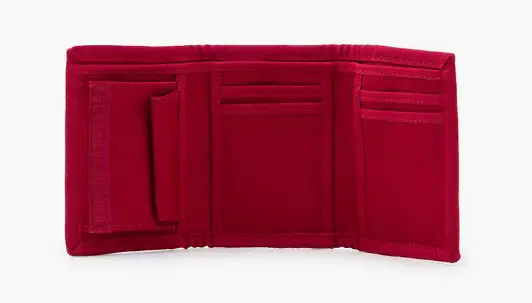
Just because a wallet can fit a lot of cash bills doesn’t mean that this amount of cash is optimal for it to carry. If you want to maintain the condition of your wallet for a long time, then you can’t just go ahead and overstuff it, since this could easily cause damage to it.
On that note, who even wants a bulky wallet with a bunch of unnecessary things inside it? In my opinion, one of those unnecessary things is carrying a lot of cash bills that you don’t actually need to carry.
This is exactly why it is important to understand how to best utilize the cash storage capacity on different wallets, and how to organize your cash so that it fits your lifestyle well.
What is the maximum number of cash bills you can keep in your wallet?
The maximum number of cards you can carry in your wallet largely depends on the type of wallet you have. There are some wallets that can carry as many as 20 cash bills without any issues.
However, most minimalist wallets, even ones with bigger capacities, can’t carry 20 cash bills. It is more common to find wallets that can carry 10-15 bills than it is to find ones that carry 20 cash bills.
If you need more cash capacity, see my detailed guide on the best wallets for cash.
Different factors that affect the cash storage capacity
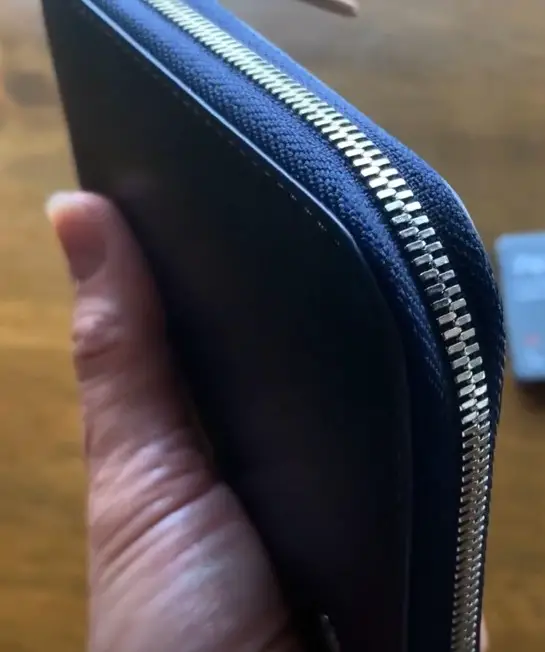
As previously said, the amount of cash bills you can carry in your wallet largely depends on how it is designed. These are the main factors that determine a wallet’s cash storage capacity.
Manufacturing material
The type of material used to make a wallet can affect how many cash bills you can carry in it.
Some aluminum wallets are made out of two plates that form the wallet. This is also usually true for titanium wallets, as well as carbon fiber wallets.
These types of wallets usually don’t have pockets, unless there is some sort of leather adapter which can be added to the wallet. Instead of pockets, they usually use money clips or cash bands. These cash-holding tools can hold fewer cash bills than you would be able to carry in a traditional wallet with pockets.
Leather wallets have a bigger cash storage capacity. A large number of them have their own separate pocket for cash, which is wide enough to carry at least 8 cash bills.
One thing to be wary of when using minimalist wallets is overstuffing them with cash. You might get tempted to fill your wallet with as many cash bills as it can handle, but I would suggest being careful since overstuffing your wallet can damage the leather.
Money-holding mechanism
If you’ve done your research, you must have already noticed that not all wallets use pockets to carry cash.
Some wallets use a cash clip that can’t really hold a large amount of money.
Some use a cash band, which in my opinion is pretty functional, especially if you want a minimalist wallet that can hold cash. Cash bands can hold more cash bills than cash clips in most cases, but always less cash than you could carry in a traditional pocket.
Are there minimalist wallets that can’t hold any cash?
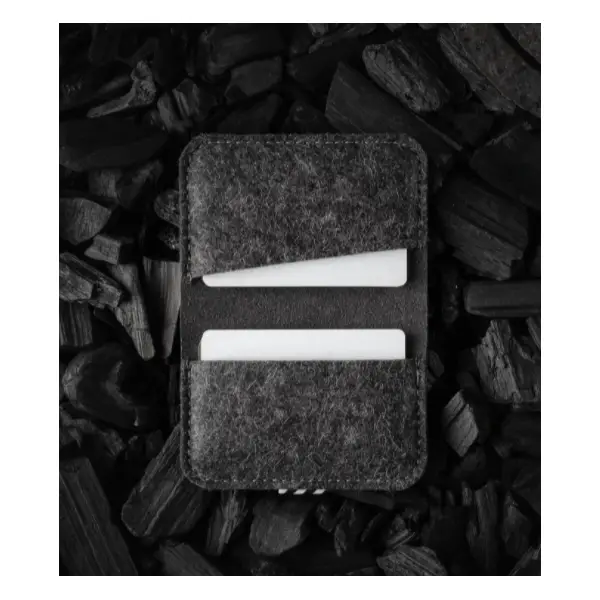
There are some minimalist wallets that are specifically built to carry cards and don’t have any room for cash bills. They come in many different forms and materials. It could be anything from a leather wallet that only has card slots, to something like an open-frame minimalist wallet that doesn’t have any type of cash-holding mechanism.
You can even find minimalist wallets that are made to hold cards, but also have the option of installing a money clip, or adding a cash band, so that you can carry some cash bills.
Can you use a minimalist wallet and still carry cash bills?
Most minimalist wallets have some sort of option available for carrying cash bills. Keep in mind that you might have to lower the number of cash bills you carry, but you don’t have to totally give up on them.
There are even minimalist wallet versions of a traditional wallet, which are basically just smaller, and have a pretty decent cash capacity.
So the answer here is yes, you can carry cash bills in a minimalist wallet, but you might have to carry less than you are used to.
How to know the optimal amount of cash bills for your wallet?
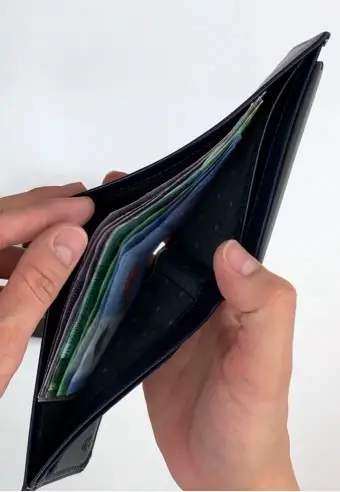
Most manufacturers inform you about the optimal number of cash bills you should carry in a specific wallet, in the wallet description.
Even if this information isn’t available there, you will typically be able to find it on blogs such as this one.
Can you adapt a minimalist wallet to carry more cash bills?
Adapting a minimalist wallet’s storage capacity depends on its design.
Some metal wallets have the option to add a money clip or cash band on them, which will give you more space for cash. There are a couple that can use both the cash band and the clip.
Unfortunately, you can’t do anything about the storage capacity of a leather wallet. There aren’t any options for customizing a leather wallet, so you just have to make do with the pockets that are already available.
Different types of wallets and their storage capacity
The type of wallet design is an important factor that determines how big your cash storage capacity will be.
Inverted wallets
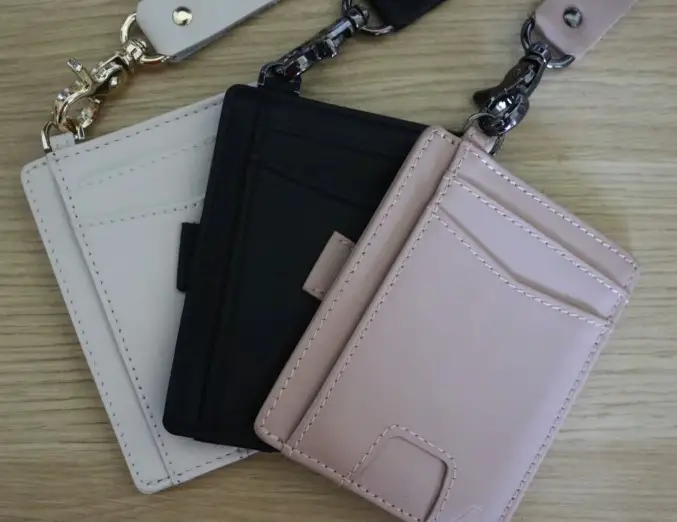
These are the types of wallets that have an inverted design, which basically means that all of the available pockets are on the outside. Now, most inverted wallets don’t have a separate pocket for cash bills, but you can find a couple of designs that do have it. They don’t have the capacity to hold a lot of cards, but they are a great pick for someone who carries just a couple of cash bills.
One fold wallet
Most one-fold wallets have a simple design which is a single frame with a couple of pockets on it. These types of wallets usually don’t have space for cash bills.
Bifold wallet
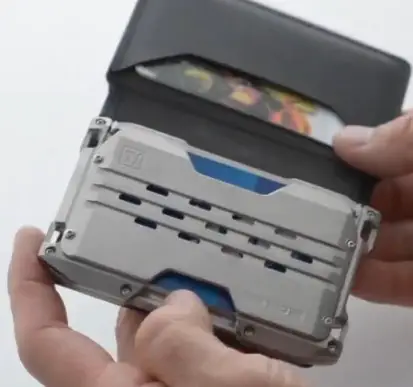
Bifold wallets are some of the most common wallets you will come across on the market. Basically, they have the capacity to hold up to 12 cards and a couple of cash bills. You can find a lot of bifold wallets with separate cash compartments.
Trifold wallet

This type of wallet is very similar to a bifold wallet. Trifold wallets are the best wallets for carrying cash bills. It is very rare to find a trifold wallet that doesn’t have a separate compartment for cash bills, sometimes they even have two.
Tactical wallet
Tactical wallets focus more on tactical features than they do on storage capacity. Their main goal is to lower the number of cards and cash bills you carry so that they can add a bunch of other tactical features to your wallet. Most of them use a money clip or cash band to carry cash, so you can only carry a couple of cash bills on them.
See my guide on what is a tactical wallet if you’re curious about this concept.
People and cash
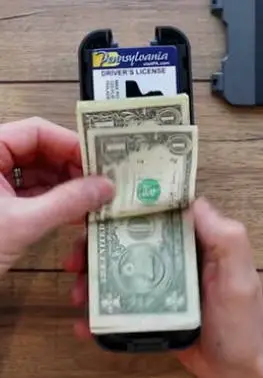
There are a couple of things you should know before you can determine the optimal amount of cash bills to carry in your wallet.
How much cash do people spend on average in one day?
Some of the major expenses in an adult’s day are utilities, groceries, and transportation. You can even count entertainment and going out here too. So on average, people in America spend around $164.55 a day.
In my opinion, you should have the amount of money for your daily expenses in cash. Now I know that most of you like to use your cards, but this is something you spend money on every day, so you should probably have the money physically at hand in case you can’t use your card to pay for any reason.
Check out the article on how much Americans spend daily for more details on the average expenditure.
How much cash should you carry with you if you go on a trip?
Wherever you decide to go on your next trip, you already know that you will have to handle most of your money in cash. You can’t go wrong with carrying cash since you can easily pay for whatever you need.
It would be wise to first create a budget for your daily expenditures so that you can determine how much money you will need to take with you. Roughly, the amount of cash you should carry per person is around $200-$400, which should be enough to cover the basic daily expenses but also have some funds in case of an emergency. At the same time, that amount of money is not too big for most people in case they lose it or have it stolen from them.
Good reasons to carry cash with you

There are a lot of situations that come to mind, in which having cash would be better than having a card to pay with.
Emergencies
Emergencies are one of the main reasons to always have some cash on hand. A difficult situation will only become more stressful if your card won’t process a payment, and you have no other way to pay.
My advice to you is to always carry a couple of cash bills that might come in handy in different unexpected situations. Especially if you are somewhere on a trip in a different country, where your payment cards might not be accepted.
Splitting a bill
Restaurants rarely print out separate bills for each individual on the table, so chances are, you will have to calculate and pay your portion. Splitting the bill can be a pretty awkward task if you only have a card at hand. When you go out to eat with friends, make sure to always carry some cash so that you can easily pay your portion of the bill.
Substitute for card
You should always have an alternative way to pay something in case your payment card stops working. There are also some places that don’t even accept cards in the first place. This is exactly why you should carry a couple of cash bills that could potentially be a lifesaver.
Best way to divide your cash bills
Before explaining the best way to divide your cash bills, first, we should cover how much cash you should carry in your wallet overall. The smartest move here would be to carry the amount of money you would need to cover your daily expenses. Now let’s be realistic, from time to time we all come across some unplanned expenditures, so it is logical to carry some extra cash for that as well. The total amount of cash for this would be somewhere between $100 and $300.
Now we can continue explaining the optimal way to divide and carry these cash bills in your wallet. I would say that in this situation, $20 bills are your best friend. Try to keep at least $100 in $20 bills, and the rest would really depend on how big your wallet is. If you have more room, you can carry more cash bills, but if not, you can just go for one $100 and two $50.
Try to avoid $1 bills or other small bills, as there aren’t that many expenses that you can cover with them, but they will still take up space inside your wallet.
Cash bills vs cards
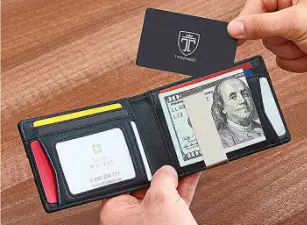
Some people prefer to pay everything in cash and their wallet is always overstuffed with cash bills, while others simply enjoy the convenience of just swiping your card. It really depends on the person themself which of these two is better.
Is it better to carry cash or cards?
My personal thoughts on this are that you can’t simply go about with only carrying cards, or only carrying cash. There are a couple of reasons why I don’t think this is optimal.
Carrying just cash bills is inconvenient for a couple of reasons. First off, you will have a very bulky wallet, which is heavy and uncomfortable to carry. A bulky wallet also means that you will strain your wallet more, which could end up damaging it. And there’s of course the risk of losing your wallet or having it stolen, which results in an even greater loss if you carry a lot of cash.
Having a lot of cash bills doesn’t mean that your payment process will be easy, since you have to search for the specific cash bill you are looking for, and this whole process can be a bit more time-consuming than just swiping your card.
Carrying just cards has different disadvantages, however. Sure, you can pay quickly and easily, but what will you do if you only have a card to pay with and it stops working? Or maybe the specific place you are at doesn’t accept cards, so you can’t even use them to pay in the first place?
All of this is why I think the best decision would be to carry cards and cash bills. At least two cards, and a couple of cash bills that would cover your daily spending should be enough.
Do people spend more when they use cash or cards?
Some people claim that they have no control over their finances when they use a card since they don’t give their money physically and it’s easier for them to spend it. On the other hand, there are some that say the minute they come across a cash bill, they find a way to spend it.
I don’t really think this is the case. You could have great control over how you spend your money no matter which type of payment method you use.
Personally, I like to make all of the payments I can with my cards, since I can easily analyze my expenses later by viewing my bank statement.
Can cards totally replace cash bills in the future?
The short answer to this question is that cards cannot replace cash in the near future. While decent efforts have been made to push electronic payment methods to be widely accepted, there are still a lot of use cases and advantages to using cash that cannot be replaced.
Credit cards, debit cards, and cash payment comparison
Here is a comparison of the different key aspects of these payment methods.
| Debit Cards | Credit Cards | Cash | |
| Quick payment | yes | yes | yes |
| Could stop working (get declined) | yes | yes | no |
| Can hold a large sum of money in a wallet | yes | yes | no |
| Accepted in every single place | no | no | yes |
| Offers extra money you don’t have at the moment | no | yes | no |
| Can get damadged | yes | yes | yes |
| Takes up a lot of space | no | no | yes |


